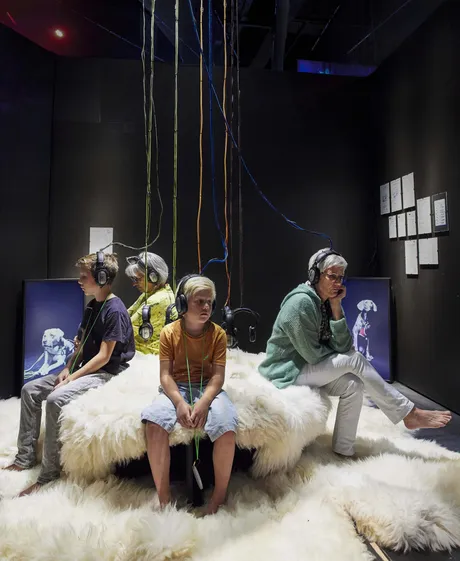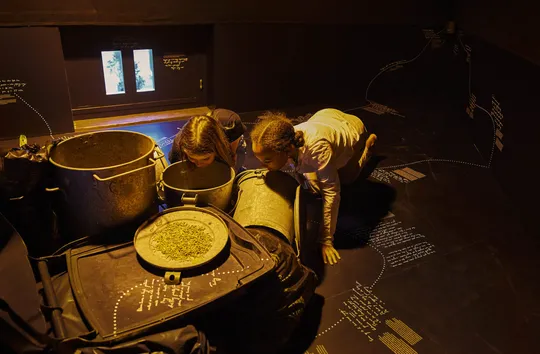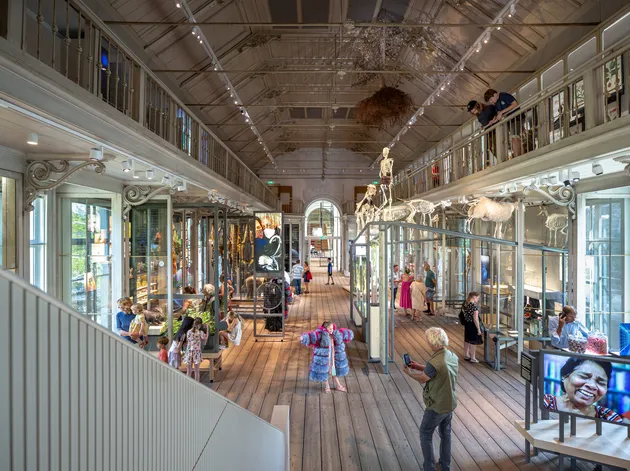NAVIGATING OUR CONNECTION WITH NATURE
Stapferhaus
What is 'nature', and to whom does it belong? Are we part of it, or is it part of us? Organic tomatoes and vegan cheese are becoming status symbols, while global meat consumption also continues to rise. We drive an electric carbut also fly to the Caribbean. Amid climate crisis and biodiversity loss, we are presented with the fundamental question of how we as humans relate to nature. Rather than providing answers, 'Nature. And us?' creates space for dialogue and new perspectives.
- Location
- Lenzburg
- Client
- Stapferhaus
- Year
- 2022
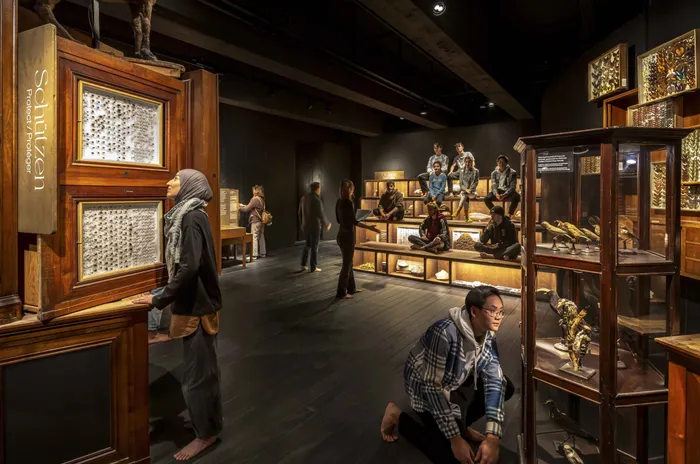
What we observe is not nature itself, but nature exposed to our method of questioning.
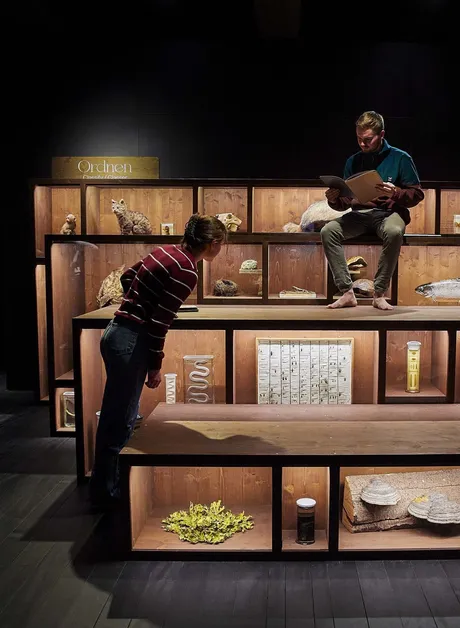

Natural connection
This exhibition awakens your senses from the very start. Your shoes? Take them off. Because isn’t it strange that humans are the only creatures that detach themselves from the ground in this way? You enter the exhibition by walking barefoot across a surface of ancient, yet ordinary, grains of sand. Your footprints remain visible until they’re covered by other footprints or disappear with time: you become part of this ‘living’ exhibition.

The power of connection is palpable throughout the exhibition. The heart of the exhibition is a large open space full of monumental projections. Images and live improvised music form the backdrop for stories about politics, science and philosophy that illustrate our ambivalent relationship with nature. Headphones enable you to listen to the perspectives of a surfer, city pigeon manager, Minecraft gamer, florist, shaman and cook. The room’s atmosphere changes with each perspective.
Three-part collage
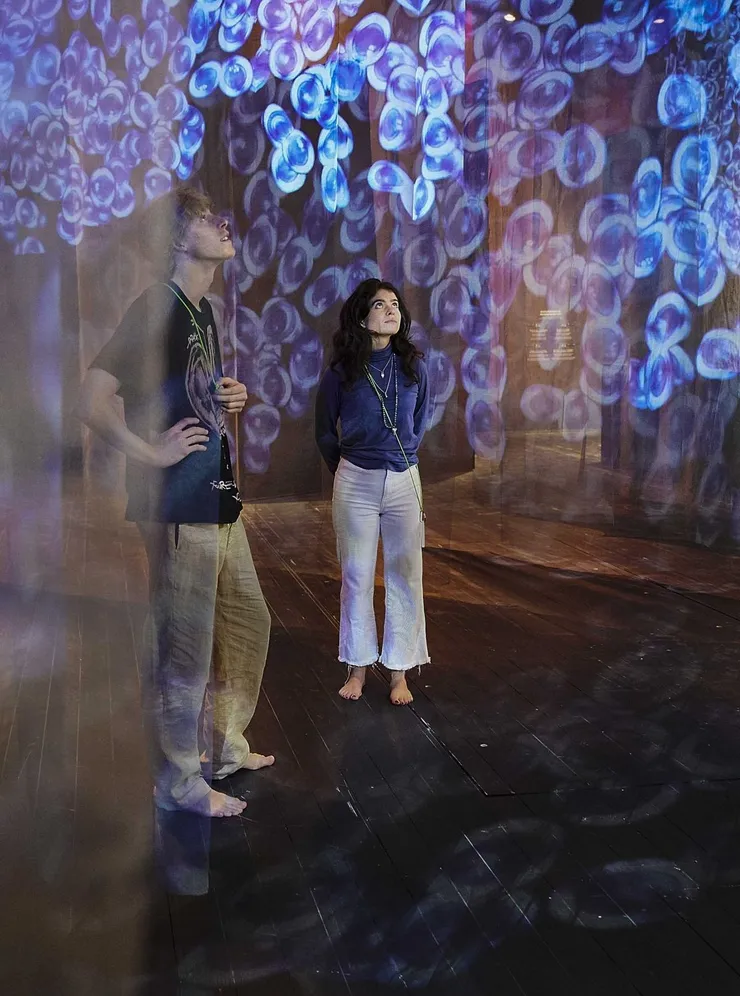
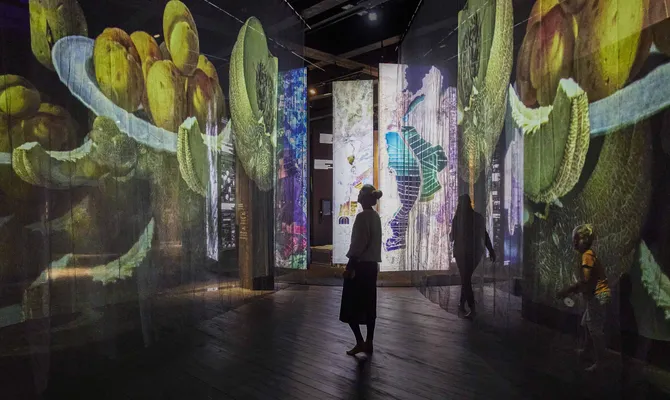
Three-part collage
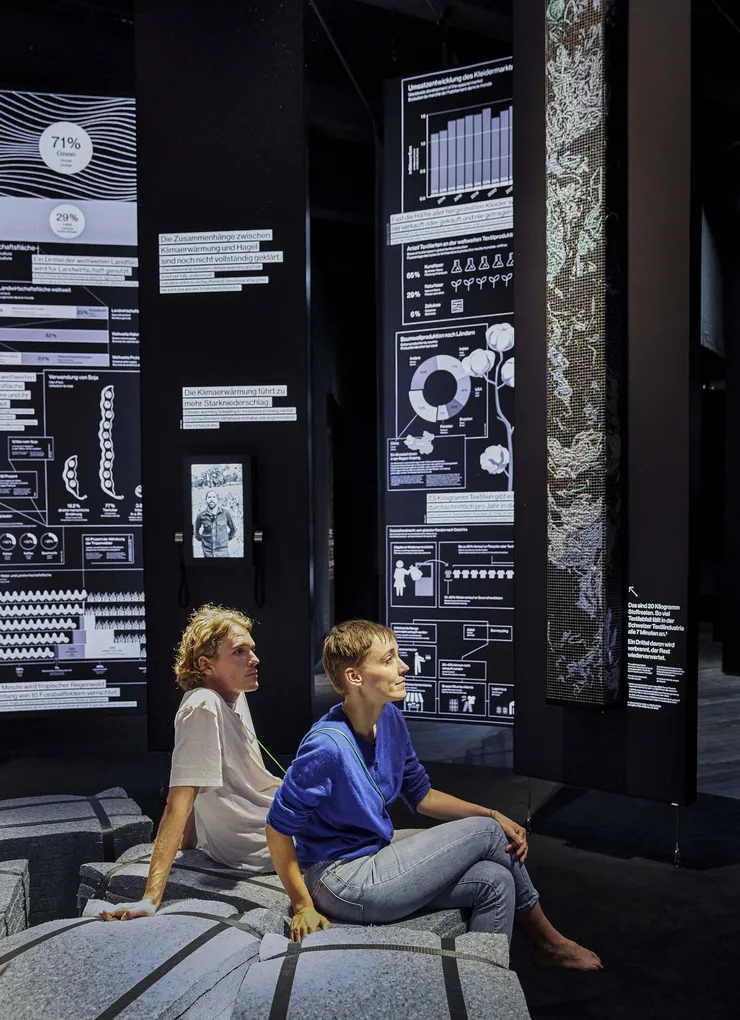
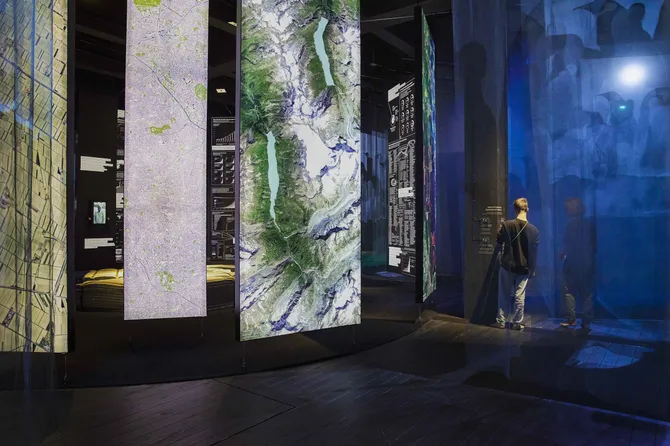
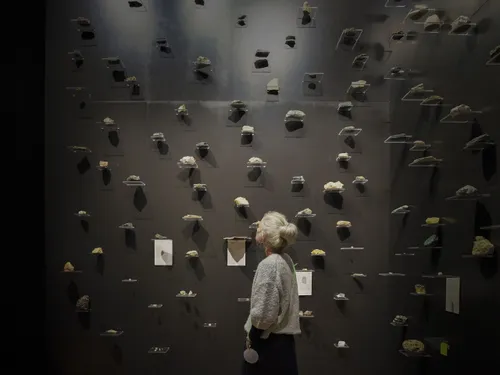
Our inner compass
To navigate the fundamental questions about your relation with nature, you receive a compass. Each pavilion presents a what if-situation, where visitors can question their preconceptions, open their minds and re-calibrate their compass. While a compass normally directs you, this one provides a starting point of new directions to explore.
Three-part collage
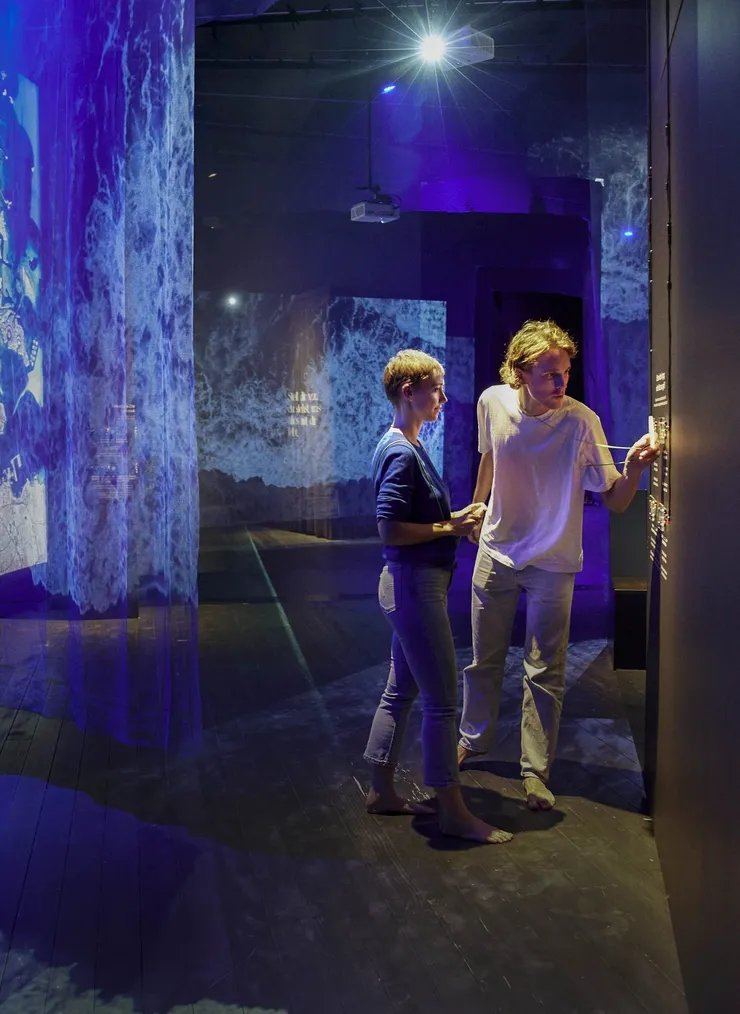
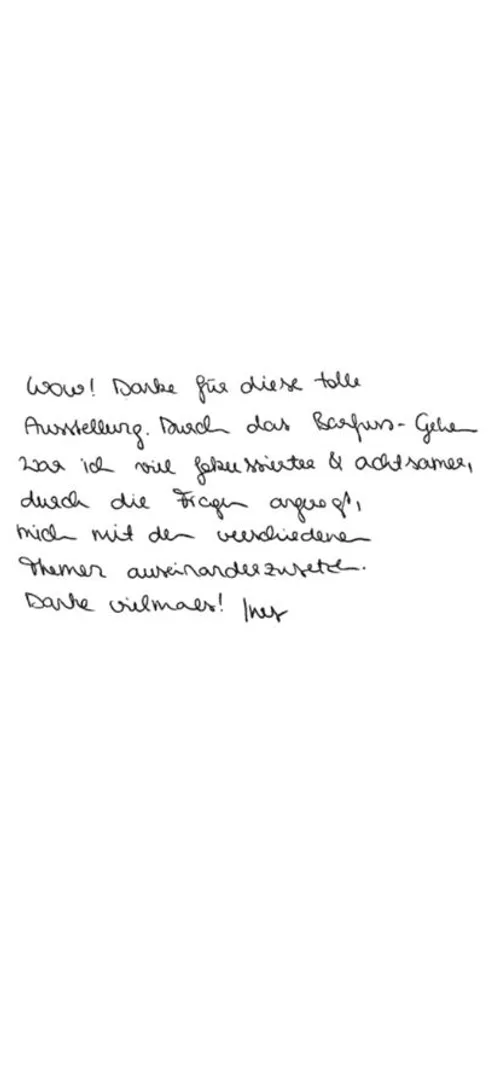
Project data
- 20Months total opening time
- 111 737Total visitors
- 14/20Questions answered with the compass on average
- 58%Of visitors stayed longer than 2 hours in the exhibition
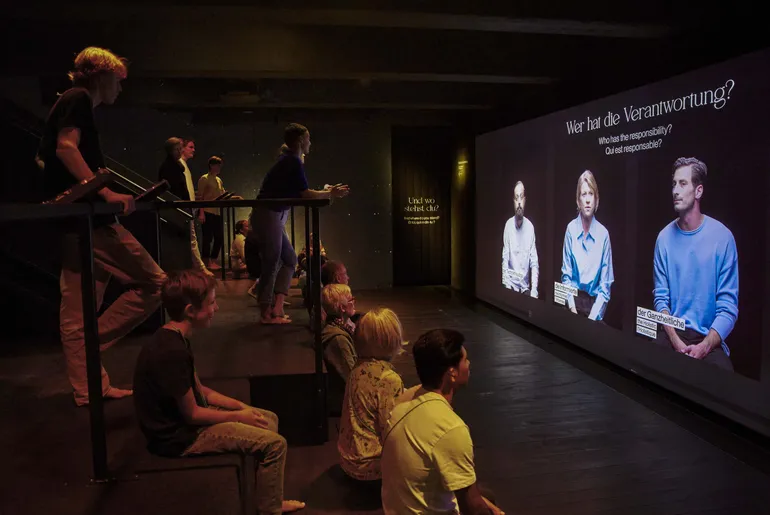
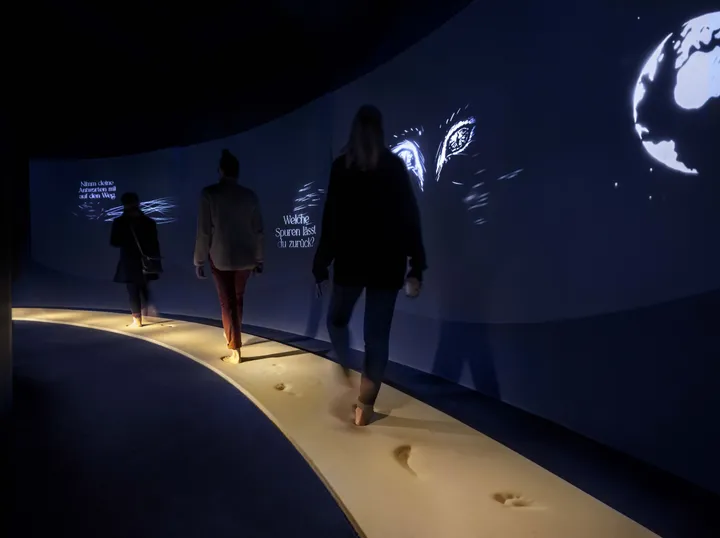
Awards
European Design Awards 2023
- Finalist
Design Week Awards 2023
- Exhibition Design - Finalist, Highly Commended
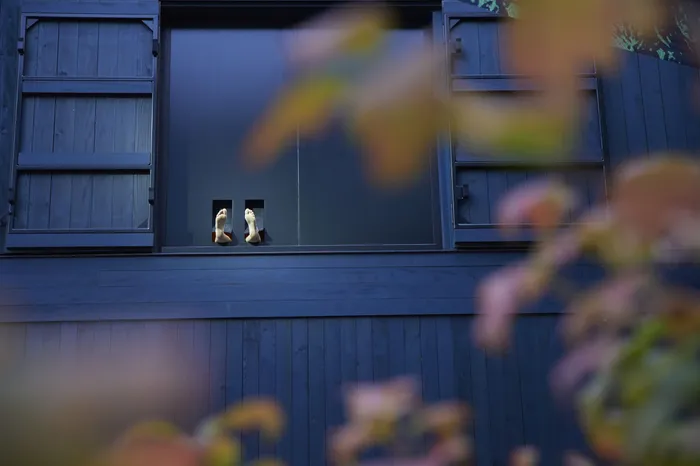
I can't think of a more powerful, intelligent and compelling presentation of the most urgent issues facing humans.
